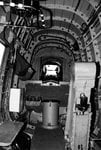[SC] Arachnicus
Senior Airman
Okay. This is kind of a stupid question but am curious if any of you ever read or heard WW2 fighter pilots talk about this. For the fighter pilots that were on long rang missions (mustangs for example), what did the pilots do to make sure they didn't have "A nature accident", while flying? I mean there were pilots that would have to fly several hours on long range missions, you have to think that some of those poor guys had to sit in their own urine and feces if a uncontrollable body function happened.
That really had to suck. Grant it, I'm sure pilots made sure to not drink to eat certain things to help prevent that from happening. I do remember hearing soldiers in tanks eating lots of cheese to prevent them from having to go #2 in the battlefield.
Again, I am sorry if I offended anyone but I am curious to what their solutions were to problems.
That really had to suck. Grant it, I'm sure pilots made sure to not drink to eat certain things to help prevent that from happening. I do remember hearing soldiers in tanks eating lots of cheese to prevent them from having to go #2 in the battlefield.
Again, I am sorry if I offended anyone but I am curious to what their solutions were to problems.


